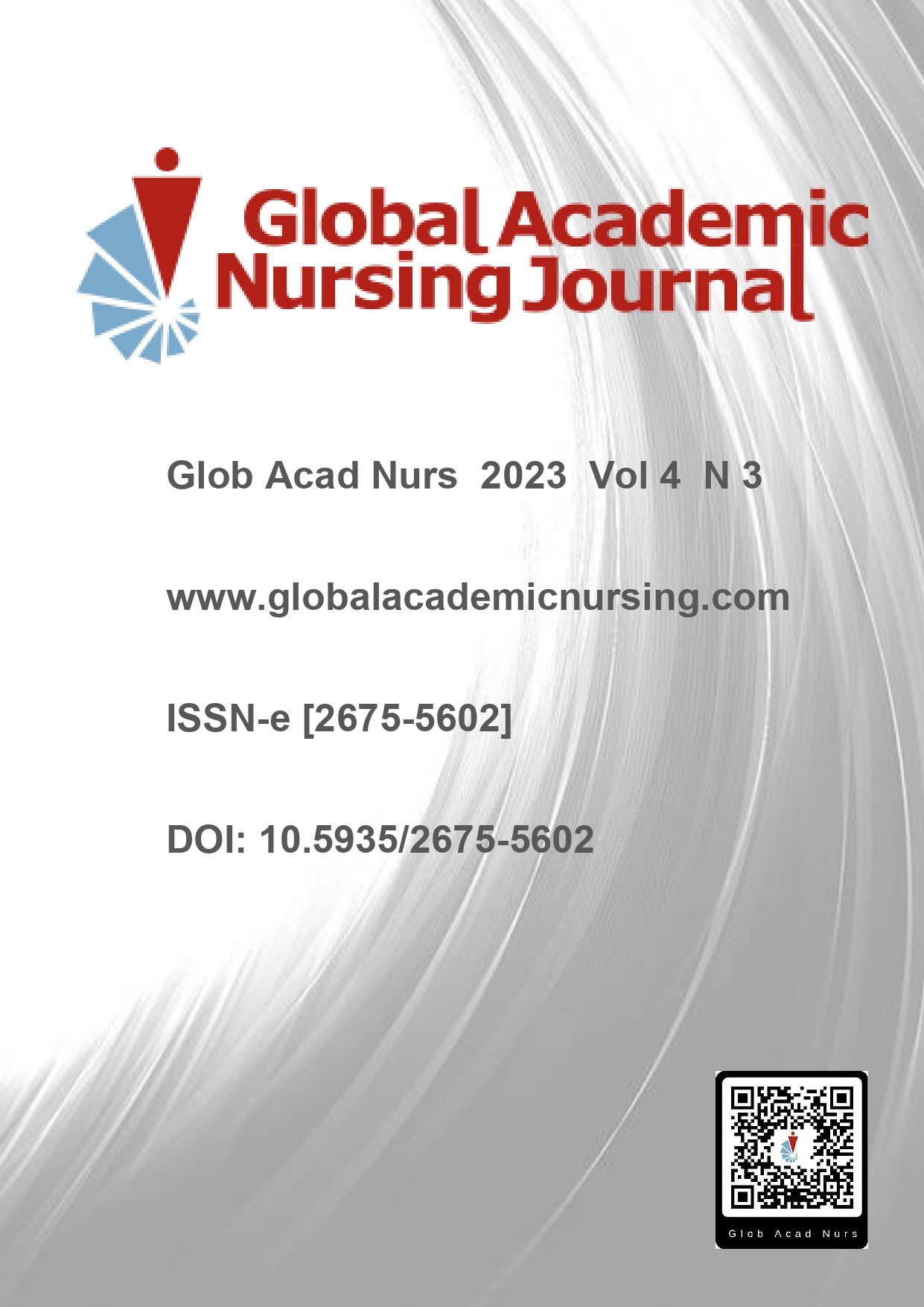Abstract
The aim is to map and summarize scientific productions on the use of hypodermoclysis in elderly people in the home environment. The scoping review will be conducted under recommendations from the JBI Institute and Prisma-Scr. This scoping review will search for sources of evidence in full texts of primary studies and gray literature theses and dissertations, available in the main databases: PubMed, CINAHL, SCOPUS, Web of Science, Science Direct, and SciELO. As an exclusion criterion, review studies (secondary) or those that do not meet the PCC mnemonic combination will not be included: P Population – Health Caregivers; C Concept – Hypodermoclysis; C Context – Domiciled elderly person. In this review there will be no language restrictions, however, a time frame was established starting in 2009. The selection of studies will be made by two independent reviewers using the Endnote and Rayyan software, while a third will resolve differences between them. For extraction, analysis of evidence, and synthesis of knowledge, a structured data extraction tool developed by the JBI Institute and adapted by reviewers will be used to meet the objective and main question of the research. In the final scoping review, there will be a description of the research results and the process of including articles in the study.
References
WHO. World report on ageing and health [Internet]. Genebra: WHO Library; 2015 [cited 2022 Nov 17]. 246 p. Available from: https://apps.who.int/iris/handle/10665/186463
WHO. World health statistics 2022: monitoring health for the SDGs, sustainable development goals [Internet]. Genebra: WHO Library; 2022 [cited 2022 Nov 17]. 131 p. Available from: https://www.who.int/publications/i/item/9789240051157
Veras R. Envelhecimento populacional contemporâneo: demandas, desafios e inovações. Rev Saúde Pública. 2009 Jun;43(3):548–54.
Brasil M da S. Complexidade do cuidado na Atenção domiciliar. Brasília: Ministério da Saúde; 2017. 179 p.
Morsch P, Jenkins HR, Vitoy B, Guzman LS, Vega E. The urgency of fostering long-term care systems in aging societies. Geriatr Gerontol Aging. 2021;15:e0210050.
Valcarenghi RV, Lourenço L de FL, Siewert JS, Alvarez AM. Produção científica da Enfermagem sobre promoção de saúde, condição crônica e envelhecimento. Rev Bras Enferm. 2015 Aug;68:705–12.
Cardoso DH, Mortola LA, Arrieira IC de oliveira. Terapia subcutânea para pacientes em cuidados paliativos: a experiência de enfermeiras na atenção domiciliar. Journal of Nursing and Health. 2016 Sep 8;6(2):346–54.
Salvador PTC de O, Oliveira RKM de, Costa TD da, Santos VEP, Tourinho FSV. Tecnologia e inovação para o cuidado em enfermagem. Revista Enfermagem UERJ. 2012 Oct 1;20(1):111–7.
Santana PPC, D’ Acampora IA, Andrade M, Ribeiro WA, Balbino CM, Oliveira WAD, et al. O processo de trabalho do enfermeiro gerontólogo: uma revisão integrativa de literatura. GANJ [Internet]. 2021 [cited 2023 Aug 7];2(Supl2). Available from: https://globalacademicnursing.com/index.php/globacadnurs/article/view/168
Silva RSD, Amaral JBD, Malagutti W. Enfermagem em cuidados paliativos: Cuidando para uma boa morte. 2nd ed. Vol. 1. São Paulo: Editora Martinari; 2013. 418 p.
Azevedo DL. O uso da via subcutânea em geriatria e cuidados paliativos. 1st ed. Rio de Janeiro: Sociedade Brasileira de Geriatria e Gerontologia; 2016. 56 p.
Messias A de A, Maiello APMV, Coelho FP, D’Alessandro MPS, Castro ACP de, Borges AP de S, et al. Manual de Cuidados Paliativos. São Paulo: Hospital Sírio Libanês: Ministério da Saúde; 2020. 175 p.
Pontalti G, Rodrigues ESA, Firmino F, Fábris M, Stein MR, Longaray VK. Via subcutânea: segunda opção em cuidados paliativos. Subcutaneous route: second option in palliative care. 2012;32(2):199–207.
Justino ET, Tuoto FS, Kalinke LP, Mantovani MF. Hipodermóclise em pacientes oncológicos sob cuidados paliativos. Cogitare Enfermagem [Internet]. 2013 Mar 29 [cited 2022 Nov 17];18(1). Available from: https://revistas.ufpr.br/cogitare/article/view/31307
Menezes SGF de, Medeiros MOSF de. O conhecimento dos estudantes de enfermagem sobre a hipodermóclise no idoso. Revista Enfermagem Contemporânea. 2018 Oct 31;7(1):48–54.
Pontalti G, Riboldi C de O, Gioda RS, Echer IC, Franzoi MA, Wegner W. Benefícios da Hipodermóclise na Clínica Paliativa de Pacientes com Câncer: Relato de Caso. Rev BrasileiraDeCancerologia. 2016;62(3):247–52.
Guedes N de AB, Melo LS de, Santos FBO, Barbosa JAG. Complicações da via subcutânea na infusão de medicamentos e soluções em cuidados paliativos. Rev Rene. 2019 Sep 25;20:e40933.
Brasil M da S. Atenção Domiciliar na Atenção Primária à Saúde. Brasília: Ministério da Saúde; 2020. 98 p.
Zironde ES, Marzenini NL, Soler VM. Hipodermóclise: redescoberta da via subcutânea no tratamento de indivíduos vulneráveis. CuidArte, Enferm. 2014;8(1):55–61.
Bruno VG. Hypodermoclysis: a literature review to assist in clinical practice. einstein (São Paulo). 2015 Mar 24;13:122–8.
Gomes NS, Silva AMB, Zago LB, Silva ÉC de L e, Barichello E. Nursing knowledge and practices regarding subcutaneous fluid administration. Rev Bras Enferm. 2017 Oct;70:1096–105.
Peters MD, Godfrey C, McInerney P, Munn Z, Tricco AC, Khalil H. Chapter 11: Scoping reviews. In: Aromataris E, Munn Z, editors. JBI Manual for Evidence Synthesis [Internet]. JBI; 2020 [cited 2022 Nov 17]. Available from: https://jbi-global-wiki.refined.site/space/MANUAL/4687342/Chapter+11%3A+Scoping+reviews
Santos SSS, Ribeiro JM, Alves HB, Costa ACB, Felipe AOB, Costa ICP. Utilização da hipodermóclise por profissionais de saúde: Scoping review. Research, Society and Development. 2021 Jul 30;10(9):e44110918338–e44110918338.
Souza IP de, Silva MPC, Oliveira ALR, Souza GV de, Rocha JB do A, Contim D. O estado da arte sobre hipodermóclise na assistência à saúde da criança: revisão de escopo. Rev Rene [Internet]. 2022 [cited 2022 Nov 17];23. Available from: http://www.repositorio.ufc.br/handle/riufc/65161

This work is licensed under a Creative Commons Attribution-NonCommercial-NoDerivatives 4.0 International License.
Copyright (c) 2023 Global Academic Nursing Journal

